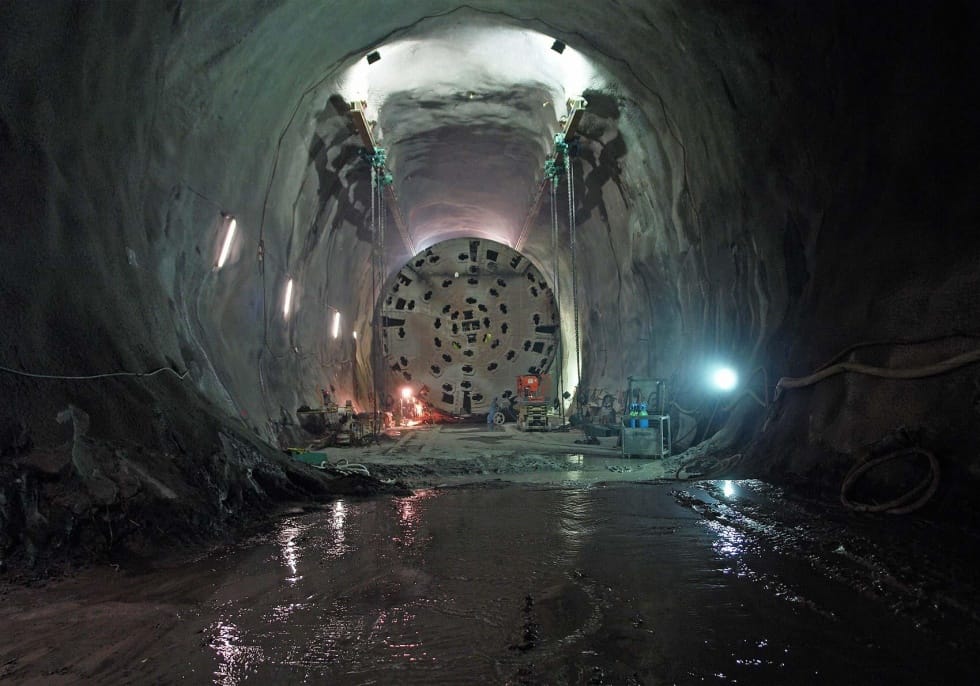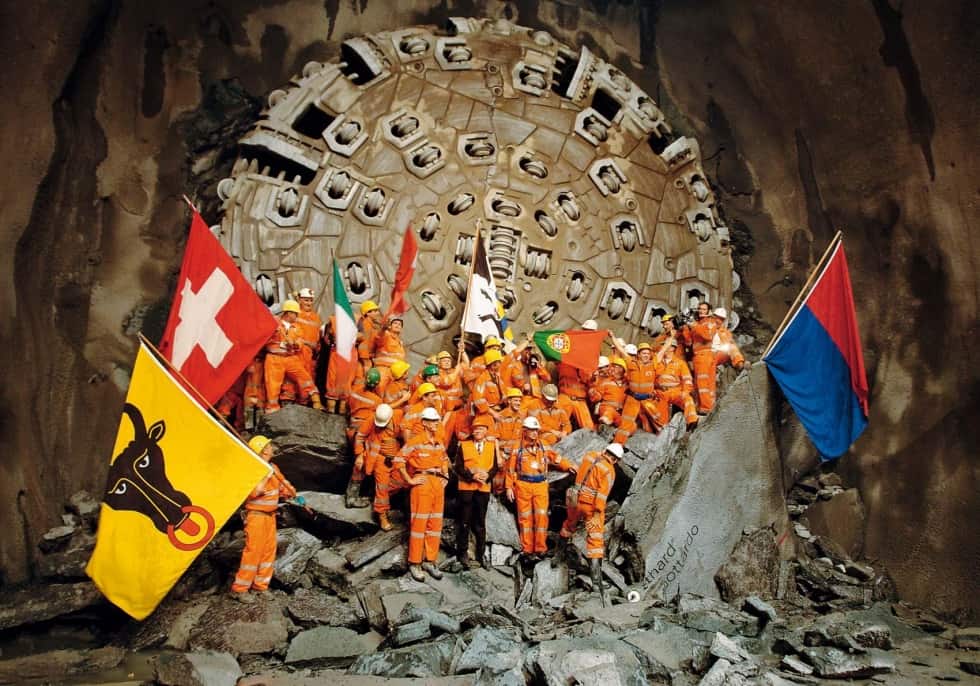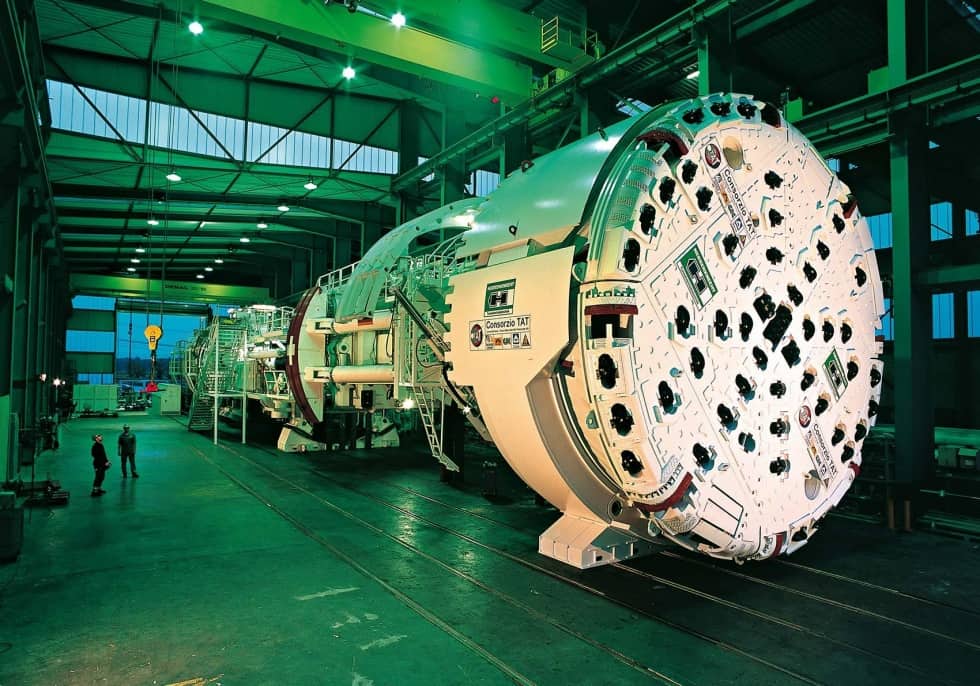The 57km tunnel, which runs beneath the Swiss alps from Erstfeld to Bodio, will shave 45 minutes off the journey time between Zurich and Lugano.
 Two 57km long tunnels were excavated beneath the Swiss alps
Two 57km long tunnels were excavated beneath the Swiss alps
Funded by the Swiss government and built at a cost of around €9bn, the new link forms a central component of the “Rhine-Alp corridor”, an EU backed project aimed at improving rail freight transportation in Europe.
Construction on the project - which saw the excavation of two 57km tunnels as well as the creation of a series of cross-passages, access tunnels and shafts - began in 1999, and involved more than 2,400 workers.
During construction the tunnel - which at points runs at up to 2000m beneath the surface - was subdivided into five separate sections which, to save time, were built simultaneously. Access adits provided access to the underground construction sites for personnel, materials and machines.
For one of the trickiest deepest sections of the route, between specially built underground stations named Amsteg and Sedrun, access from the surface was provided through a 1km-long access tunnel and two 800m-deep vertical shafts.

From here the two tubes were blast-driven to the north and south. Because the deep overburden and high rock stresses threatened to deform the tunnel, special supporting means were necessary in some places. The engineers developed an innovative new concept with flexible steel rings which partly closed under the rock pressure and thereby prevented deformations in the completed structure.
The project saw the excavation of 28.2 million tonnes of rock, a large proportion of which was used to make concrete which was returned to the interior of the mountain.

Scheduled services will begin operating in December 2016, and, when fully up and running, up to 260 freight trains and 65 passenger trains a day are expected to use the tunnel.
The project was originally proposed back in 1947 but plans were repeatedly delayed and redrawn over the following decades. Hailing the project as a “huge engineering achievement” Martin Knights, Fellow of the Institution of Civil Engineers (ICE) and member of the British Tunneling Society, said the project is testament to recent advanced in tunneling technology. “I’m pleased to see the vision finally come to life, and to see the project benefit from the major technical advances in tunnel boring machines made in the 1960s and 70s.”




JLR teams with Allye Energy on portable battery storage
This illustrates the lengths required to operate electric vehicles in some circumstances. It is just as well few electric Range Rovers will go off...